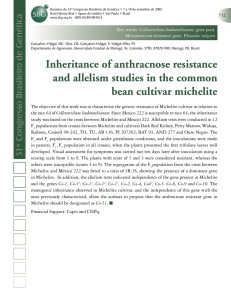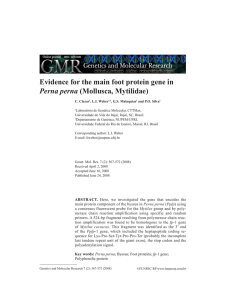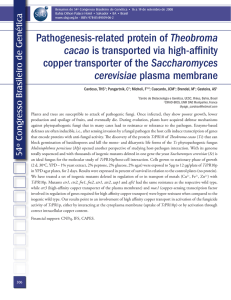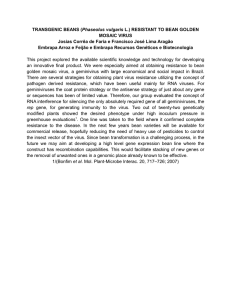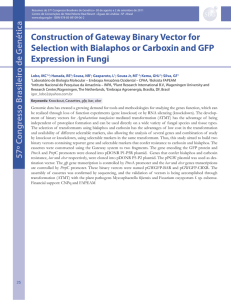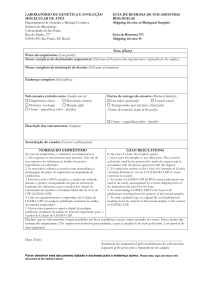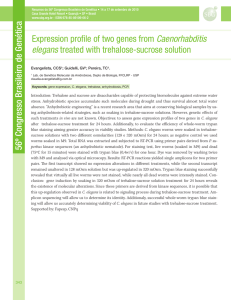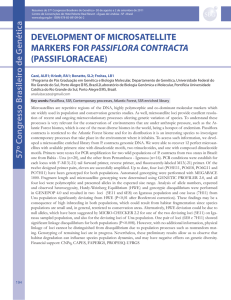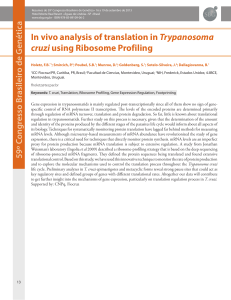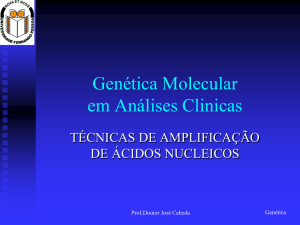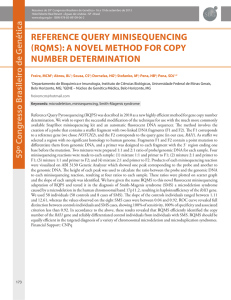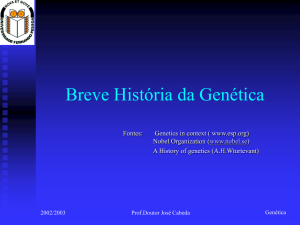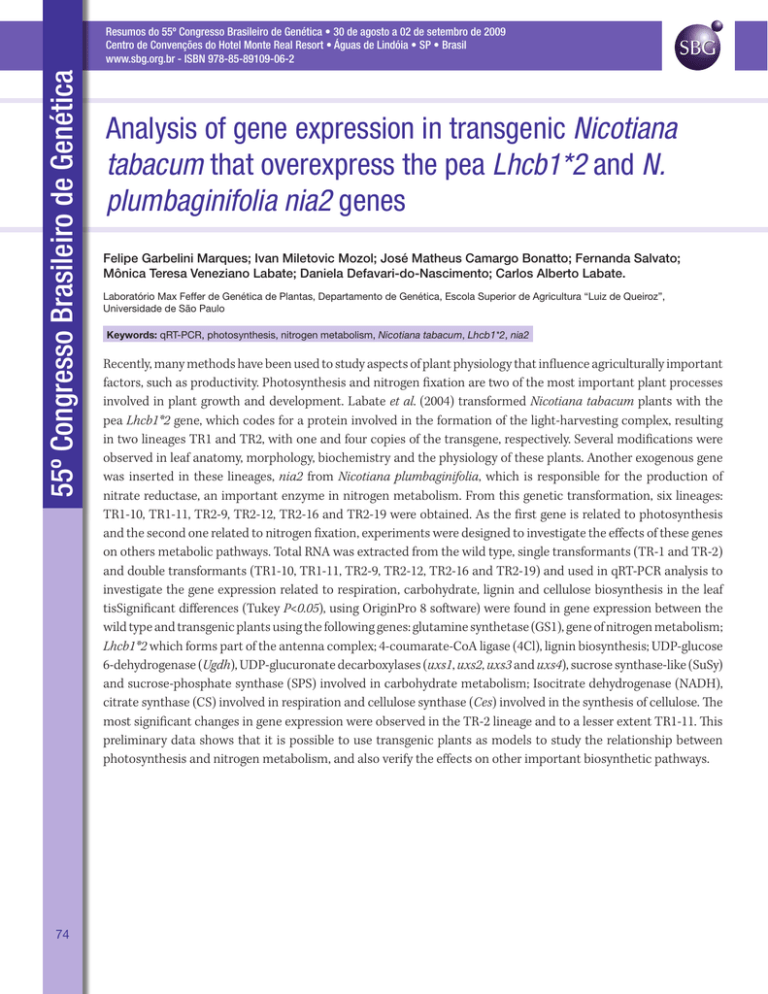
55º Congresso Brasileiro de Genética
Resumos do 55º Congresso Brasileiro de Genética • 30 de agosto a 02 de setembro de 2009
Centro de Convenções do Hotel Monte Real Resort • Águas de Lindóia • SP • Brasil
www.sbg.org.br - ISBN 978-85-89109-06-2
74
Analysis of gene expression in transgenic Nicotiana
tabacum that overexpress the pea Lhcb1*2 and N.
plumbaginifolia nia2 genes
Felipe Garbelini Marques; Ivan Miletovic Mozol; José Matheus Camargo Bonatto; Fernanda Salvato;
Mônica Teresa Veneziano Labate; Daniela Defavari-do-Nascimento; Carlos Alberto Labate.
Laboratório Max Feffer de Genética de Plantas, Departamento de Genética, Escola Superior de Agricultura “Luiz de Queiroz”,
Universidade de São Paulo
Keywords: qRT-PCR, photosynthesis, nitrogen metabolism, Nicotiana tabacum, Lhcb1*2, nia2
Recently, many methods have been used to study aspects of plant physiology that influence agriculturally important
factors, such as productivity. Photosynthesis and nitrogen fixation are two of the most important plant processes
involved in plant growth and development. Labate et al. (2004) transformed Nicotiana tabacum plants with the
pea Lhcb1*2 gene, which codes for a protein involved in the formation of the light-harvesting complex, resulting
in two lineages TR1 and TR2, with one and four copies of the transgene, respectively. Several modifications were
observed in leaf anatomy, morphology, biochemistry and the physiology of these plants. Another exogenous gene
was inserted in these lineages, nia2 from Nicotiana plumbaginifolia, which is responsible for the production of
nitrate reductase, an important enzyme in nitrogen metabolism. From this genetic transformation, six lineages:
TR1-10, TR1-11, TR2-9, TR2-12, TR2-16 and TR2-19 were obtained. As the first gene is related to photosynthesis
and the second one related to nitrogen fixation, experiments were designed to investigate the effects of these genes
on others metabolic pathways. Total RNA was extracted from the wild type, single transformants (TR-1 and TR-2)
and double transformants (TR1-10, TR1-11, TR2-9, TR2-12, TR2-16 and TR2-19) and used in qRT-PCR analysis to
investigate the gene expression related to respiration, carbohydrate, lignin and cellulose biosynthesis in the leaf
tisSignificant differences (Tukey P<0.05), using OriginPro 8 software) were found in gene expression between the
wild type and transgenic plants using the following genes: glutamine synthetase (GS1), gene of nitrogen metabolism;
Lhcb1*2 which forms part of the antenna complex; 4-coumarate-CoA ligase (4Cl), lignin biosynthesis; UDP-glucose
6-dehydrogenase (Ugdh), UDP-glucuronate decarboxylases (uxs1, uxs2, uxs3 and uxs4), sucrose synthase-like (SuSy)
and sucrose-phosphate synthase (SPS) involved in carbohydrate metabolism; Isocitrate dehydrogenase (NADH),
citrate synthase (CS) involved in respiration and cellulose synthase (Ces) involved in the synthesis of cellulose. The
most significant changes in gene expression were observed in the TR-2 lineage and to a lesser extent TR1-11. This
preliminary data shows that it is possible to use transgenic plants as models to study the relationship between
photosynthesis and nitrogen metabolism, and also verify the effects on other important biosynthetic pathways.

